Medicinal Herbs
I remember having an aloe plant in our front yard as a child. It was a lifesaver because whenever I hurt myself… whether it be a burn or a cut, my mom would cut a piece of the plant and rub it on my bruise and it always seemed to make me feel better.
Although we will always need doctors, we can still use medicinal herbs to strengthen our immune systems and relieve painful and uncomfortable symptoms of many conditions. Also, the idea is to maintain a healthy balance to prevent illness from ever occurring.
There are several medicinal plants that can be used for more than just bruises. Some of them are used just like the aloe, by taking a piece of the plant and rubbing it on the affected area. Others are steeped in water to make herbal teas, and some are mixed with other ingredients to make natural home remedy crèmes and oils.
If you decide to use medicinal plants, treat them like all medicines; carefully research how they should be used and in what amounts.
Here is a list of some popular medicinal plants and their uses:
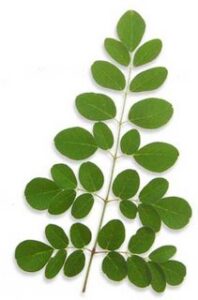 Moringa Tree – Probably one of the most important all around medicinal plants. This is truly a miracle plant and benefits are almost to numerous to name. The benefits are (not limited to): Improves immune system, nourishes the brain and eyes, lowers the appearance of wrinkles, promotes energy, acts as an antioxidant.
Moringa Tree – Probably one of the most important all around medicinal plants. This is truly a miracle plant and benefits are almost to numerous to name. The benefits are (not limited to): Improves immune system, nourishes the brain and eyes, lowers the appearance of wrinkles, promotes energy, acts as an antioxidant.
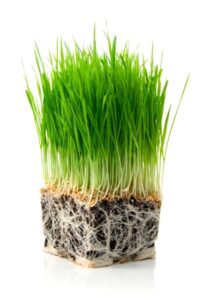 Wheatgrass – Although wheatgrass is not an herb it has incredible medicinal purposes. It increases red blood-cell count and lowers blood pressure. It cleanses the blood, organs and gastrointestinal tract of debris. Wheatgrass also stimulates metabolism and the body’s enzyme systems by enriching the blood and aids in reducing blood pressure by dilating the blood pathways throughout the body.
Wheatgrass – Although wheatgrass is not an herb it has incredible medicinal purposes. It increases red blood-cell count and lowers blood pressure. It cleanses the blood, organs and gastrointestinal tract of debris. Wheatgrass also stimulates metabolism and the body’s enzyme systems by enriching the blood and aids in reducing blood pressure by dilating the blood pathways throughout the body.
Wheatgrass is very easy to grow. In fact you can grow it indoors and it only takes about a week to grow to a length ready for juicing. Do keep in mind that you will need a special juicer to juice wheatgrass.
 Echinacea – Echinacea can be planted in your front or backyard because the flower is very pleasing to the eye. It has the capacity to raise your body’s resistance to bacterial and viral infections. It is also used to strengthen the immune system in fighting allergies when steeped in water. And the roots are beneficial in the treatment of sores, wounds and burns. The echinacea grows on any well drained soil, as long as it gets sunlight.
Echinacea – Echinacea can be planted in your front or backyard because the flower is very pleasing to the eye. It has the capacity to raise your body’s resistance to bacterial and viral infections. It is also used to strengthen the immune system in fighting allergies when steeped in water. And the roots are beneficial in the treatment of sores, wounds and burns. The echinacea grows on any well drained soil, as long as it gets sunlight.
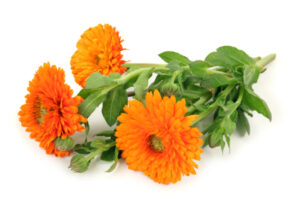 Pot Marigold – The pot marigold grows in almost any type of soil condition. It has no problem with nutritionally poor, very acidic or very alkaline soils, just as long as it’s moist. It is well known as a remedy for skin problems and the tea of the petals are supposed to tone up circulation and if taken regularly, eases varicose veins. It is also said that by applying the crushed stems of the pot marigold to corns and warts makes them easily removable.
Pot Marigold – The pot marigold grows in almost any type of soil condition. It has no problem with nutritionally poor, very acidic or very alkaline soils, just as long as it’s moist. It is well known as a remedy for skin problems and the tea of the petals are supposed to tone up circulation and if taken regularly, eases varicose veins. It is also said that by applying the crushed stems of the pot marigold to corns and warts makes them easily removable.
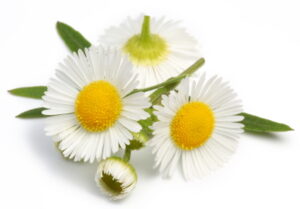 Chamomile – Chamomile has a soothing and calming effect in the area of aromatherapy, used to end stress and aid in sleep. It can also be used for a number of ailments, including a cold, diarrhea, earache, toothache, digestive disorders, eczema, and common wounds.
Chamomile – Chamomile has a soothing and calming effect in the area of aromatherapy, used to end stress and aid in sleep. It can also be used for a number of ailments, including a cold, diarrhea, earache, toothache, digestive disorders, eczema, and common wounds.
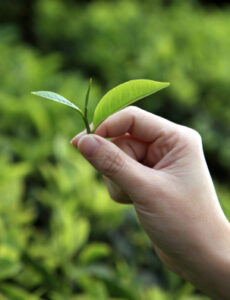 Tea Tree – Even the Aborigines have been using the tea tree leaves for medicinal purposes, like chewing on young leaves to relieve headaches. The leaves and twigs, eventually made into tea tree oil, is anti-fungal, antibacterial, and antiseptic. Tea tree oil can be used in home-made cleansers and to treat several conditions including thrush, vaginal infections, acne, insect bites, cold sores and minor burns.
Tea Tree – Even the Aborigines have been using the tea tree leaves for medicinal purposes, like chewing on young leaves to relieve headaches. The leaves and twigs, eventually made into tea tree oil, is anti-fungal, antibacterial, and antiseptic. Tea tree oil can be used in home-made cleansers and to treat several conditions including thrush, vaginal infections, acne, insect bites, cold sores and minor burns.

Lemon Balm – The flowers, which appear during the summer, are full of nectar. When you rub the crushed leaves on the skin they are used as a mosquito repellent, for herpes, gout and insect bites. If you infuse the leaves with water, it is known to treat colds, fevers, indigestion, depression and headaches.
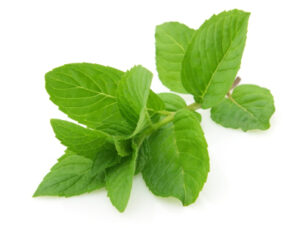 Peppermint – Peppermint is naturally high in manganese, vitamin A and vitamin C. Crushed leaves rubbed on the skin help soothe and relax the muscles. Infused peppermint leaves are used to reduce irritable bowel syndrome, against upset stomachs, to treat fevers and flatulence. Putting crushed leaves in boiling water is used as an air freshener and an inhalant to loosen phlegm. It’s also a flavoring.
Peppermint – Peppermint is naturally high in manganese, vitamin A and vitamin C. Crushed leaves rubbed on the skin help soothe and relax the muscles. Infused peppermint leaves are used to reduce irritable bowel syndrome, against upset stomachs, to treat fevers and flatulence. Putting crushed leaves in boiling water is used as an air freshener and an inhalant to loosen phlegm. It’s also a flavoring.
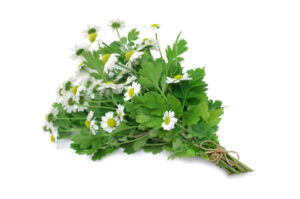 Feverfew – Used to treat colds, fevers, and arthritis, as well as for bruises, swollen feet, and to help with migraine headaches. Chewing up to 5 leaves per day is suggested for home remedy for headache (migraine). As an herbal tea, it is taken to reduce fevers or prevent muscle spasms.
Feverfew – Used to treat colds, fevers, and arthritis, as well as for bruises, swollen feet, and to help with migraine headaches. Chewing up to 5 leaves per day is suggested for home remedy for headache (migraine). As an herbal tea, it is taken to reduce fevers or prevent muscle spasms.
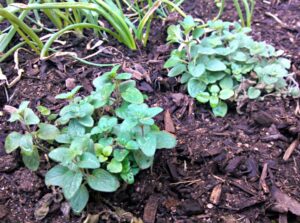 Oregano – This super herb is very rich in anti-oxidants and a natural source for Omega-3 fatty acids. It can be used as a disinfectant, and an aid for throat/respiratory infections as well as digestion. Oregano is a great source for vitamin E & K, calcium, iron and fiber. You can use it as dried seasoning or just add the leaves to your salads.
Oregano – This super herb is very rich in anti-oxidants and a natural source for Omega-3 fatty acids. It can be used as a disinfectant, and an aid for throat/respiratory infections as well as digestion. Oregano is a great source for vitamin E & K, calcium, iron and fiber. You can use it as dried seasoning or just add the leaves to your salads.
 Lavender – Lavender oil has many uses. Rubbed into the skin, it can relax muscles and be used as aromatherapy. Crushed lavender flowers and drops of the oil can be brewed into a tea that helps the body to relax and sleep. The flowers have also been used to treat digestive problems, insomnia, anxiety, and restlessness. It can also be used as a disinfectant and insect repellant. Lavender grows best in a well-drained garden area or pot that receives plenty of sunlight.
Lavender – Lavender oil has many uses. Rubbed into the skin, it can relax muscles and be used as aromatherapy. Crushed lavender flowers and drops of the oil can be brewed into a tea that helps the body to relax and sleep. The flowers have also been used to treat digestive problems, insomnia, anxiety, and restlessness. It can also be used as a disinfectant and insect repellant. Lavender grows best in a well-drained garden area or pot that receives plenty of sunlight.
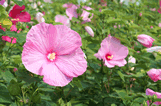 Hibiscus– grows well in hot and humid climates. Parts of the Hibiscus plant are used to make jams, spices, soups, and sauces. Hibiscus is used for treating loss of appetite, colds, heart and nerve diseases, upper respiratory tract pain and swelling (inflammation), fluid retention, stomach irritation, and disorders of circulation; for dissolving phlegm; as a gentle laxative; and as a diuretic to increase urine output. Some people have experienced a hallucinogenic effect from drinking hibiscus tea or a sensation of feeling intoxicated.
Hibiscus– grows well in hot and humid climates. Parts of the Hibiscus plant are used to make jams, spices, soups, and sauces. Hibiscus is used for treating loss of appetite, colds, heart and nerve diseases, upper respiratory tract pain and swelling (inflammation), fluid retention, stomach irritation, and disorders of circulation; for dissolving phlegm; as a gentle laxative; and as a diuretic to increase urine output. Some people have experienced a hallucinogenic effect from drinking hibiscus tea or a sensation of feeling intoxicated.
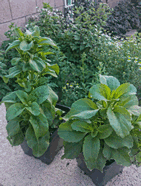 Stevia – Stevia (rebaudiana) -Most of us have heard of its sweet benefits, but the stevia plant offers so much more! Stevia leaves aids people with diabetes, hypoglycemia and high blood pressure. According to some studies it can help in preventing colds and flu because it supposedly hinders the growth of certain bacteria. You can use fresh leaves for tea, eat a few right off the plant, or turn leaves into powder. You can also make your own liquid stevia extract by adding a cup of warm water to 1/4 cup of crushed stevia leaves. it sit for 24 hours and then store it in the refrigerator.
Stevia – Stevia (rebaudiana) -Most of us have heard of its sweet benefits, but the stevia plant offers so much more! Stevia leaves aids people with diabetes, hypoglycemia and high blood pressure. According to some studies it can help in preventing colds and flu because it supposedly hinders the growth of certain bacteria. You can use fresh leaves for tea, eat a few right off the plant, or turn leaves into powder. You can also make your own liquid stevia extract by adding a cup of warm water to 1/4 cup of crushed stevia leaves. it sit for 24 hours and then store it in the refrigerator.
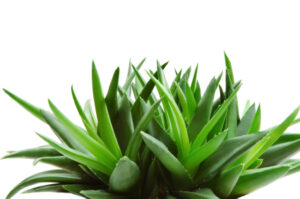 Aloe Vera – The sap from aloe vera is extremely useful to speed up the healing and reducing the risk of infections. It can be used against sunburn, kitchen burns, and other skin irritations. In a juice form, aloe vera is used against ulcerative colitis, constipation, and other digestive diseases.
Aloe Vera – The sap from aloe vera is extremely useful to speed up the healing and reducing the risk of infections. It can be used against sunburn, kitchen burns, and other skin irritations. In a juice form, aloe vera is used against ulcerative colitis, constipation, and other digestive diseases.
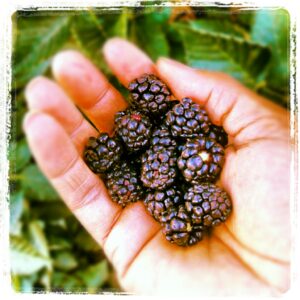 Blackberries – Nature’s fountain of youth. Blackberries are highly packed with antioxidants, anthocyanins and polyphenols. This combines to make them effective in preventing cancer, and heart disease. Blackberries help in memory retention and help with hypertension. They are also high in Vitamin C, A, E, K and have high amounts of manganese and fiber.
Blackberries – Nature’s fountain of youth. Blackberries are highly packed with antioxidants, anthocyanins and polyphenols. This combines to make them effective in preventing cancer, and heart disease. Blackberries help in memory retention and help with hypertension. They are also high in Vitamin C, A, E, K and have high amounts of manganese and fiber.
Pregnant or nursing women should not use medicinal plants unless under the supervision of their doctors. Always let your physician know what medicinal plants you have been using. If there are any changes in heart rhythm, vision, mental processes, dizziness, itching, rashes, or abnormal bleeding, discontinue use of medicinal plants and consult with your physician.
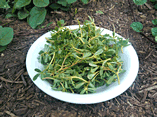 Purslane – Mistakenly called a weed, purslane is a vegetarian’s dream food. Purslane contains alph-linolenic acid, a highly sought Omega-3 fatty acid. Modern research has shown that this herb has 5 times the amount of omega-3 fatty acids than spinach. If fact purslane has the richest source of mega-3 fatty acids of all vegetables. The herb is high in antioxidants, vitamin A,C,and E and helps with heart disease, asthma, depression, and boost immune systems. Every part of the plant is edible, most often it is sprinkled in salads, but can be used in practically any recipe the mind can desire.
Purslane – Mistakenly called a weed, purslane is a vegetarian’s dream food. Purslane contains alph-linolenic acid, a highly sought Omega-3 fatty acid. Modern research has shown that this herb has 5 times the amount of omega-3 fatty acids than spinach. If fact purslane has the richest source of mega-3 fatty acids of all vegetables. The herb is high in antioxidants, vitamin A,C,and E and helps with heart disease, asthma, depression, and boost immune systems. Every part of the plant is edible, most often it is sprinkled in salads, but can be used in practically any recipe the mind can desire.
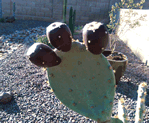 Prickly pear – Prickly pear is a large, spiny cactus that bears numerous deep red, juicy-sweet fruits. Prickly pears grow in North American deserts, Southwest U.S., Mexico and in Canada. The unique thing about the prickly pear plant is that it possesses two different edible sections: the pad of the cactus (nopal), which is treated as vegetable, and the pear (tuna) which is used as fruit. This plant is rich in flavanoids. Studies have shown that flavanoids, found in great abundance in the prickly pear, can protect the immune system and prevent oxidative stress by acting as a fighter against free radicals. Cells and organs are protected by this antioxidant action. Athletes are now turning to the prickly pear to speed recovery of muscles. It is also known to help stabilize blood sugar and fight against cancer.
Prickly pear – Prickly pear is a large, spiny cactus that bears numerous deep red, juicy-sweet fruits. Prickly pears grow in North American deserts, Southwest U.S., Mexico and in Canada. The unique thing about the prickly pear plant is that it possesses two different edible sections: the pad of the cactus (nopal), which is treated as vegetable, and the pear (tuna) which is used as fruit. This plant is rich in flavanoids. Studies have shown that flavanoids, found in great abundance in the prickly pear, can protect the immune system and prevent oxidative stress by acting as a fighter against free radicals. Cells and organs are protected by this antioxidant action. Athletes are now turning to the prickly pear to speed recovery of muscles. It is also known to help stabilize blood sugar and fight against cancer.

Did you know?
![]() Herbal seeds have been found in pre-historic cave dwellings dating as old as 500,000 years. Our ancestors have always used herbs as food and as remedies.
Herbal seeds have been found in pre-historic cave dwellings dating as old as 500,000 years. Our ancestors have always used herbs as food and as remedies.
![]() The Egyptians studied herbs and used them in medicinal and religious functions as far back as 3500 B.C. The Chinese began the organized study of herbs in 2500 B.C. Written records inChina have survived enumerating the uses of herbs that date from 100 B.C.
The Egyptians studied herbs and used them in medicinal and religious functions as far back as 3500 B.C. The Chinese began the organized study of herbs in 2500 B.C. Written records inChina have survived enumerating the uses of herbs that date from 100 B.C.
![]() The discovery of America itself is linked to Western civilization’s search for easier access to rare spices and herbs. Columbus was, in fact, hoping to open trade routes for these substances when he blundered into the West Indies and the Age of Exploration unveiled the New World.
The discovery of America itself is linked to Western civilization’s search for easier access to rare spices and herbs. Columbus was, in fact, hoping to open trade routes for these substances when he blundered into the West Indies and the Age of Exploration unveiled the New World.
![]() Western medicine eventually turned away from “herbalism” and concentrated instead on chemical cures. It is interesting to note, however, that many of the chemicals and medicines that have been developed over the years are in fact based on active ingredients present in herbs and plants.
Western medicine eventually turned away from “herbalism” and concentrated instead on chemical cures. It is interesting to note, however, that many of the chemicals and medicines that have been developed over the years are in fact based on active ingredients present in herbs and plants.
![]() Today’s modern healthy lifestyles are learning to include ancient herbs and supplements as part of a holistic approach to life. Ginko, Ginseng etc. have never been so widely used.
Today’s modern healthy lifestyles are learning to include ancient herbs and supplements as part of a holistic approach to life. Ginko, Ginseng etc. have never been so widely used.
![]() Besides medicinal use, herbs have always been part of human food preparation. Who can imagine a life without Basil, Thyme, Rosemary or any of the herbs we’ve come to love in our cuisine?
Besides medicinal use, herbs have always been part of human food preparation. Who can imagine a life without Basil, Thyme, Rosemary or any of the herbs we’ve come to love in our cuisine?
![]() Herb gardens are an easy and fun way to bring healthy, fresh foods and nutrients into your daily life. Organic herbs and plants should be an essential part of your diet.
Herb gardens are an easy and fun way to bring healthy, fresh foods and nutrients into your daily life. Organic herbs and plants should be an essential part of your diet.
![]() Aromatherapy owes its existence to fresh, organic herbs.
Aromatherapy owes its existence to fresh, organic herbs.
![]() A little easy research and you can make organic herbs, and herbal supplements part of your life. It’s the kind of knowledge that will set you free to enjoy life fully.
A little easy research and you can make organic herbs, and herbal supplements part of your life. It’s the kind of knowledge that will set you free to enjoy life fully.
Moringa miracle
Growing Wheatgrass
 Pomegranate – Pomegranates are very popular for its dark, red -colored juice that is packed with lots of antioxidants that aid in maintaining a smooth and wrinkle free skin. Aside from maintaining youthful and glowing skin, pomegranates are a good, natural source of vitamins A, C and E as well as folic acid. It helps reduce the risk of heart disease, heart attacks, and strokes. The high content in flavenoids and antioxidants help support the immune system supporting the body’s natural defense in the prevention of certain cancers. Also among many other benefits They’re also a great vegan source of iron, protect the arteries, lower cholesterol and help reduce the risk of Alzheimer’s disease.
Pomegranate – Pomegranates are very popular for its dark, red -colored juice that is packed with lots of antioxidants that aid in maintaining a smooth and wrinkle free skin. Aside from maintaining youthful and glowing skin, pomegranates are a good, natural source of vitamins A, C and E as well as folic acid. It helps reduce the risk of heart disease, heart attacks, and strokes. The high content in flavenoids and antioxidants help support the immune system supporting the body’s natural defense in the prevention of certain cancers. Also among many other benefits They’re also a great vegan source of iron, protect the arteries, lower cholesterol and help reduce the risk of Alzheimer’s disease.
Beets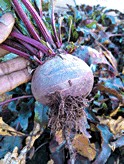 – I didn’t think I liked beets until I started adding it raw to my salads. I started to like it even more when I learned how much it can do to heal my body. One of the ingredients found in many, popular green-super food formulas is red beet root powder. Obviously you can’t make it without using actual beets. The powder is made from dehydrated beets and then ground into a powder.
– I didn’t think I liked beets until I started adding it raw to my salads. I started to like it even more when I learned how much it can do to heal my body. One of the ingredients found in many, popular green-super food formulas is red beet root powder. Obviously you can’t make it without using actual beets. The powder is made from dehydrated beets and then ground into a powder.
Not only does red beet roots and beet juice have tons of nutrients and healing potential, but beets are also a really good source for so many other things, including Vitamin C, dietary fiber, potassium, copper, iron, folate and manganese.
Beets have what’s called polyphenols, which is a type of antioxidant clinically proven to prevent degenerative diseases, particularly cardiovascular diseases and cancers. Why? Because the polyphenols are known to reduce oxidative stress that most antioxidants don’t affect.
Beets also contain Betalains, an antioxidant found most commonly in red beets. Clinical trials show that a relatively low daily dose of betalain, 300 mL, from red beet juice is enough to reverse the effects of free radical damage and oxidative stress. It’s why some researchers believe that beets may be used as a healing therapy for several degenerative conditions.
 Vitamin D– Probably the most important vitamin on the list. Vitamin D is not grown, but produced by the skin from exposure to the sun. Vitamin D is a fat soluble hormone. It has two types or forms – Vitamin D2 and Vitamin D3. Vitamin D2 is present in fungi and plants as well as fortified foods and in supplements. The source of vitamin D3 is sunlight- it is synthesized in human skin when exposed to UVB light generated from the sun. Vitamin D can also be found in fish oil.
Vitamin D– Probably the most important vitamin on the list. Vitamin D is not grown, but produced by the skin from exposure to the sun. Vitamin D is a fat soluble hormone. It has two types or forms – Vitamin D2 and Vitamin D3. Vitamin D2 is present in fungi and plants as well as fortified foods and in supplements. The source of vitamin D3 is sunlight- it is synthesized in human skin when exposed to UVB light generated from the sun. Vitamin D can also be found in fish oil.
The following list will clarify as to why we need Vitamin D? We need Vitamin D for strong bones and teeth. It is required for normal absorption of calcium and phosphorus by bones which in turn reduces the risk of bone fractures and degeneration of bones. We need Vitamin D to prevent bone diseases. Weak bones lead to such diseases as osteoarthritis, osteoporosis, osteomalacia, rickets, arthritis, etc. Vitamin D is also needed to keep the immune system functioning in a proper way so that our body can resist various types of diseases. As of late Vitamin D has been talked about in helping prevent cancer.
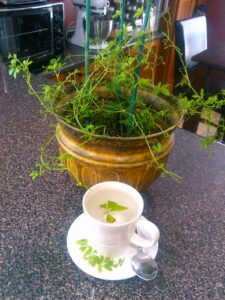 Jiagulan Herb– Jiaogulan herb, often called the immortality plant, is one of the most life giving plants known. From the province of China, the natives have been observed to have long lives from drinking this tea.
Jiagulan Herb– Jiaogulan herb, often called the immortality plant, is one of the most life giving plants known. From the province of China, the natives have been observed to have long lives from drinking this tea.
The list of benefits include: regulate cholesterol, maintain blood pressure, improve digestion, protect immune system, protect against cancer and free radical damage, regulate hormone levels in men and women, aid in weight control, and adds increased energy to the mind and body.
More importantly Jiagulan is an adaptogen , which means it will help the human body come into balance wherever it is needed. Let’s say your blood pressure is higher than it should be, Jiagulan helps lower it, like wise if your blood pressure is too low, it will help raise it. By definition an adaptogen shall not cause any harm or side effects to the body. Truly an amazing plant and a must-have for your health.
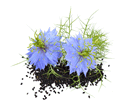 Black Seesd – For thousands of years, humans around the world have recognized the tremendous healing properties of this legendary herb. “Black seed heals every disease except for death.” the Prophet Mohammed proclaimed over fourteen hundred years ago. Of the many ways that black seed oil benefits the body, the few that stick out in the scientific literature its ability to help prevent cancer, diabetes, obesity, weight loss, hair loss, skin disorders and infections like MRSA. Black seed is hot and dry in the third degree, eliminates, flatulence, extracts the helminthes (worm), relieves leprosy and phlegm fevers, opens clogs, decomposes accumulating gas, promotes liver health and excess moisture in the stomach. It increases the flow during menstruation and the production of milk Black seeds oil helps against snakebites, and hemorrhoids. With all of these health benefits, I cannot think of one reason why everyone on the planet shouldn’t have black seed oil in their medicine cabinets!
Black Seesd – For thousands of years, humans around the world have recognized the tremendous healing properties of this legendary herb. “Black seed heals every disease except for death.” the Prophet Mohammed proclaimed over fourteen hundred years ago. Of the many ways that black seed oil benefits the body, the few that stick out in the scientific literature its ability to help prevent cancer, diabetes, obesity, weight loss, hair loss, skin disorders and infections like MRSA. Black seed is hot and dry in the third degree, eliminates, flatulence, extracts the helminthes (worm), relieves leprosy and phlegm fevers, opens clogs, decomposes accumulating gas, promotes liver health and excess moisture in the stomach. It increases the flow during menstruation and the production of milk Black seeds oil helps against snakebites, and hemorrhoids. With all of these health benefits, I cannot think of one reason why everyone on the planet shouldn’t have black seed oil in their medicine cabinets!
